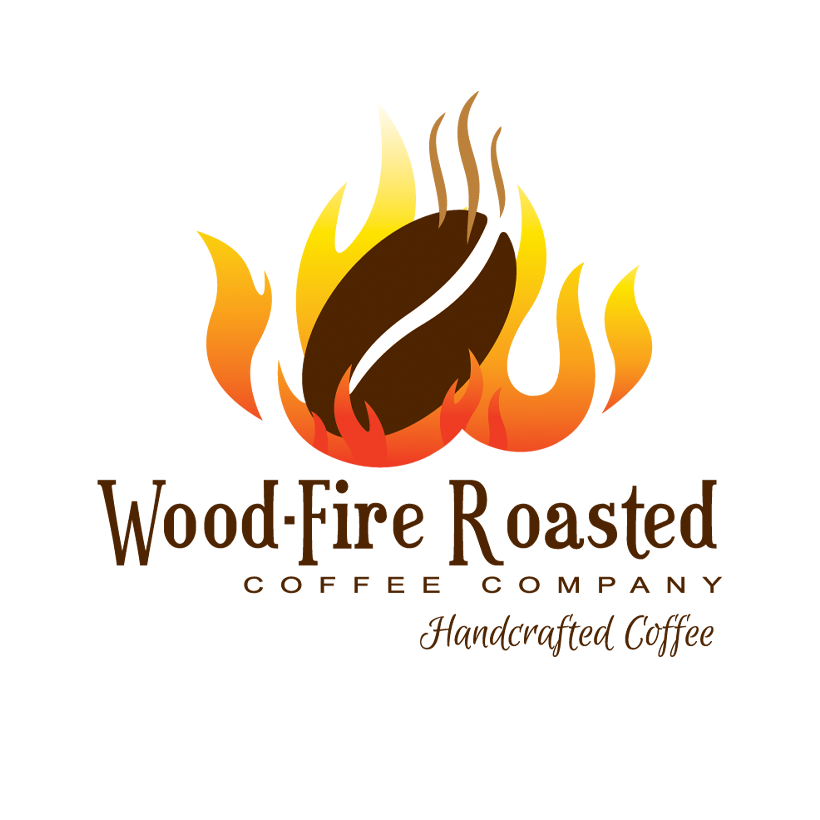Espresso is a distinctive form of our favorite beverage that requires a different extraction method to brew.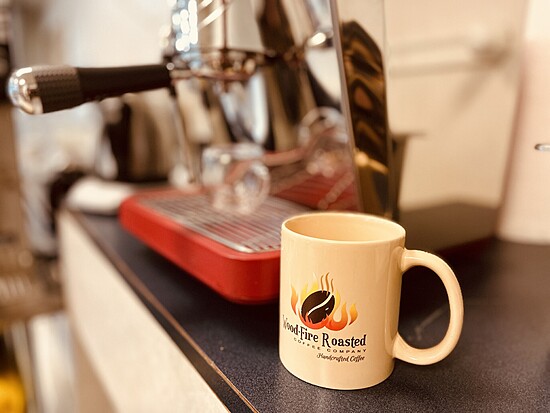
Brewing any coffee is a process that generally takes 4-5 minutes for proper extraction. This is the point where all of the sugars, acids, lipids, and volatile flavor components balance to provide the best expression of the beans and a more enjoyable cup.
In 1884, espresso came to be. According to Smithsonianmag.com, the first patent for a steam-driven espresso machine was issued that year to Angelo Moriondo of Turin, Italy. Moriondo’s espresso machine extracted the coffee using the pressure of steam versus other methods of brewing coffee that used gravity.
Espresso means “expressed” in Italian, or, more loosely, “fast”. To speed up the extraction time the coffee must be ground finer. Finer ground coffee would clog the filters during other brewing methods and slow down the process. With the espresso machine, pressure forces the heated water through the coffee grounds, increasing the water’s flow rate as it passes through the grounds.
Angelo Moriondo didn’t commercially develop his steam-driven machine. Better versions became available as improvements were introduced through the early years of the 20th century. Up to this point, the beverage created could not be considered “espresso” by today’s standards. It was simply a small, strong cup of coffee lacking in the crema associated with the beverage today.
With steam pressure, only 1.5-2 bars (atmospheric pressure) of pressure could be produced. It wasn’t until after World War II, when lever machines were introduced by Achilles Gaggia of Milan, that the current standard of 8-10 bars could be achieved, thus allowing for the development of crema (emulsified oils) floating on the surface of an espresso shot.
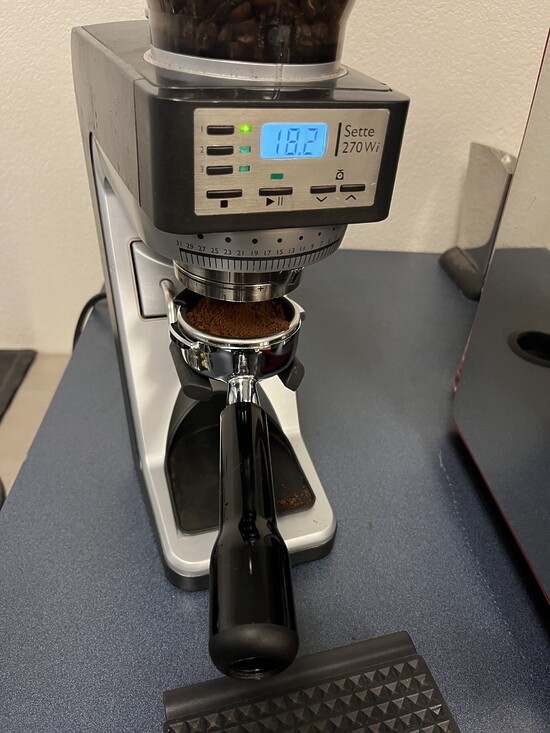 So, that’s all well and fun but the espresso machine evolved as we approached the 21st century in such a fashion that more science could be factored into the extraction process, therefore giving us a more precise method of making an espresso shot.
So, that’s all well and fun but the espresso machine evolved as we approached the 21st century in such a fashion that more science could be factored into the extraction process, therefore giving us a more precise method of making an espresso shot.
Why would this be important?
As the equipment became more refined it enabled the operator to meticulously fine-tune the extraction process to a point where precision, particularly in your finished product, could be achieved on a much more regular basis.
Those old espresso machines pulled a generally decent shot, but they were inconsistent. They ranged in volume from 25 to 30 ml (about two oz) of espresso for a single 7g dose of coffee. With such a broad range of extractions, aromatic and flavor profiles can fluctuate substantially.
Things are quite different now with the more precise equipment. If you’ve read the last two blogs, you’ll note I work with an 18-gram dose, which is a double dose with a finished product of 30 to 36 grams depending on the coffee.
A thing I’ve noticed in my decades of experience is that different coffees require different treatments. Some coffees like to be extracted with a little more water flowing through the puck, while others prefer a bit less. When I’m setting up for the restaurants, I do 36 grams of water on that same 18-gram dose because it’s more user-friendly, easier to achieve consistently for all users, and still gives a phenomenal shot.
My very first experience with espresso was in a little European-style grocery store called The Market in downtown Denver on Market Street in 1986. I ordered a cappuccino from their espresso bar.
I had never had anything like it before.
I always drank brewed coffee with cream and sugar and had not experienced the frothy milk with the intense espresso character. I thought it was wonderful.
Looking back, I can’t remember all the details, but I’m sure by my standards and expectations today it wasn’t that great. However, as a first-time experience, it was something new and delightful. Having no other point of reference at the time, I augmented the beverage with a little bit of sugar and a sprinkle of nutmeg on top.
The first experience I had making espresso was at a restaurant here in Reno. They had a little La Pavoni espresso machine behind the bar. I had to learn how to use it and, let me tell you, the shots were not good by my current standard. It was bitter, astringent, and harsh. All the things that you don’t like to experience in an espresso.
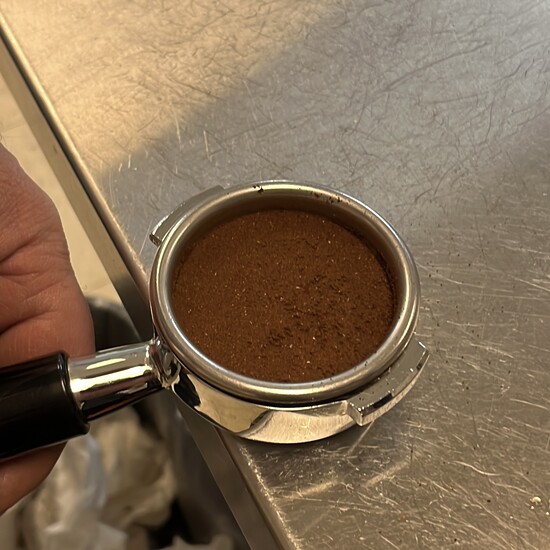
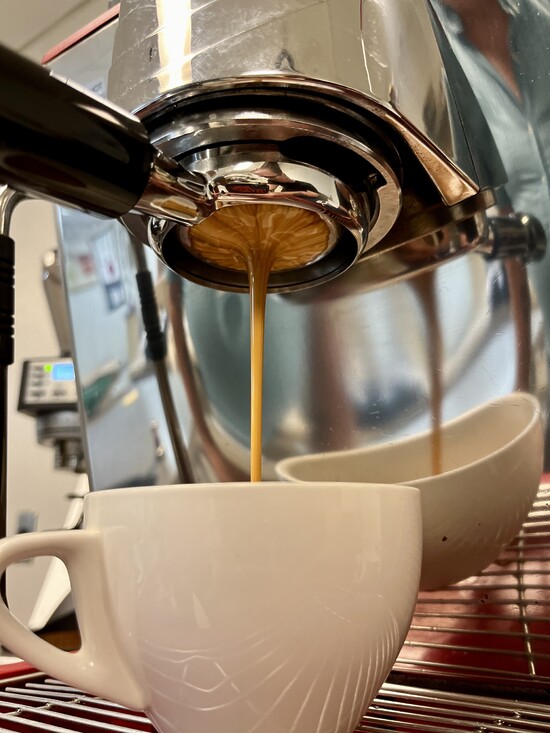
Over the years, I worked in several restaurants where espresso was served and learned more about it during that time.
Once I started Wood-Fire Roasted Coffee Company, I had to seriously up my game on espresso. Bringing clients on board without any knowledge of espresso would have been a disservice to them.
My first client, Viaggio Italian Restaurant, had an old spring-pump La Pavoni espresso machine, and I spent a good deal of time learning how to make that thing pull good shots. After lots of reading, practice, and tasting, I finally did a pretty good job.
I designed my espresso blends to be a certain way. I look for versatility—something that works well as a straight shot and stands up when topped with frothed milk too.
Espresso in the United States is something different experientially than in Europe. In Italy, espresso is the great equalizer, something that everybody from all classes can go into a café, order a coffee, and get their shot of espresso for around 1 Euro. Patrons stop in their favorite shop for coffee, a cappuccino in the morning, and caffé in the afternoon for a quick pick-me-up.
In Italy, espresso is designed to be fast and inexpensive. In the US, it is designed to be an enjoyable overall experience. It’s simply a different concept.![]()
Here, you can go into places where they’re making what they call espresso, but It is nothing like the authentic Italian version. Instead, they’re coffee drinks full of sugary syrups and lots of milk, and that’s not espresso.
When I go for an espresso in a café or restaurant, I generally order a cup of coffee also so I can see what they’re doing with both the classic brew as well as the shot of espresso.
Yes, this is very intense in the caffeine department, but I want to see how they prepare both. I don’t have to drink it all, but I like to see what they’re doing with their espresso…
Does it come out with little-to-no crema? Is it just bitter, astringent, and harsh? Then I won’t drink it.
Then, I do the same thing with the drip coffee. If it’s not any good, I don’t finish it, but I do try the coffee wherever I go.
Every morning I go into the shop to work, I follow my own personal espresso ritual.
First, turn on the espresso machine.
Second, fire up the roaster.
Third, look at the orders for the day and start the plan.
By this time the espresso machine is properly heated and I make a shot; a double of whatever we are sampling that day. We try to sample every coffee that comes through as espresso also because some flavor profiles and aromatics shine differently yet brilliantly when pulled through the espresso machine, but we wouldn’t know that until we try.
We’re also constantly trying our existing espresso blends to keep on top of quality and pondering which coffees would blend well to make new ones. Let us know how we can help you along your espresso journey and enjoy the ride.
Additional Notes:
Updated Espresso Coffee Professional Techniques, David Schomer. 2007
https://www.beveragehistory.com/2024/06/the-evolution-of-espresso-from.html#google_vignette
https://coffeechronicler.com/italian-coffee-culture-history-explained/
